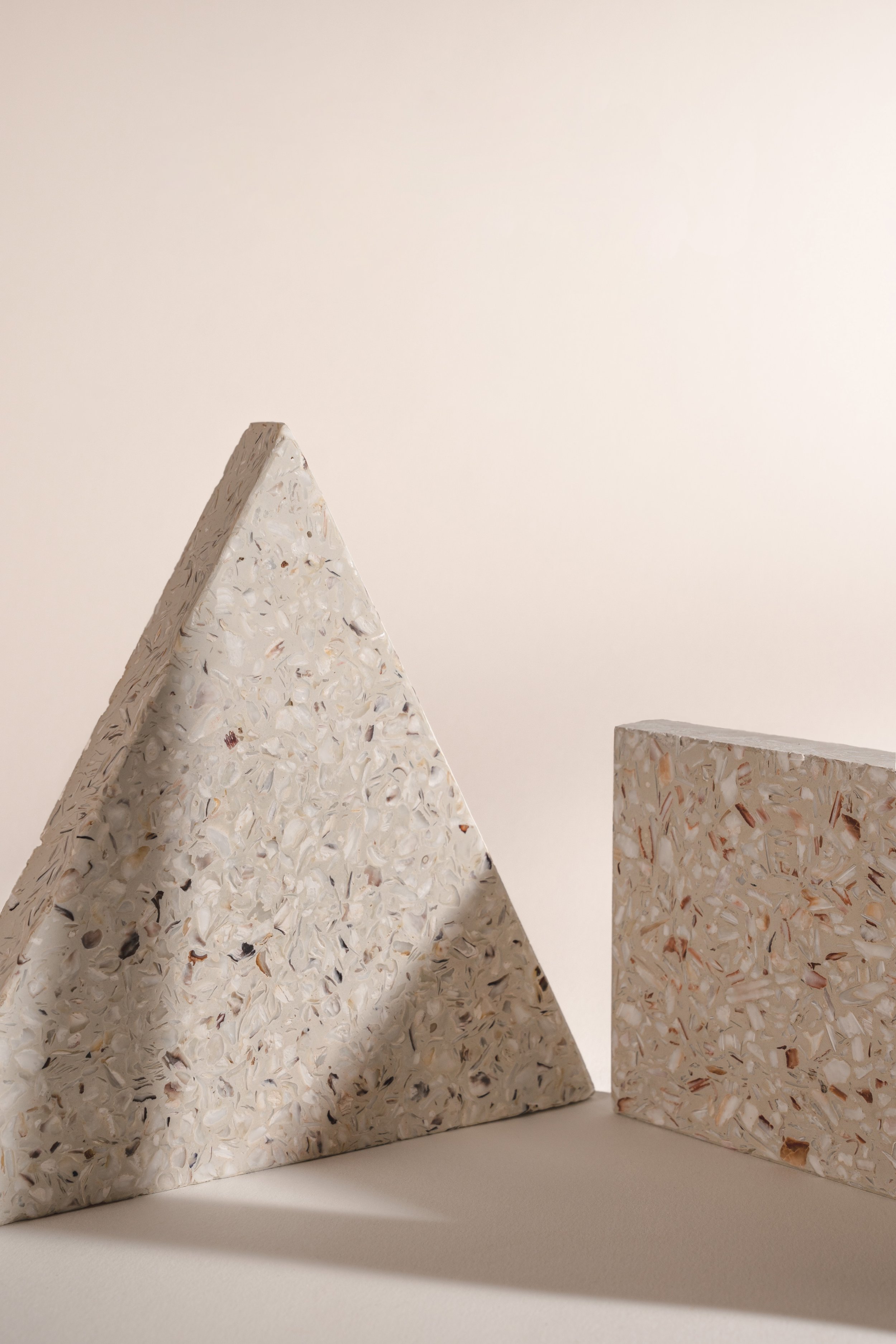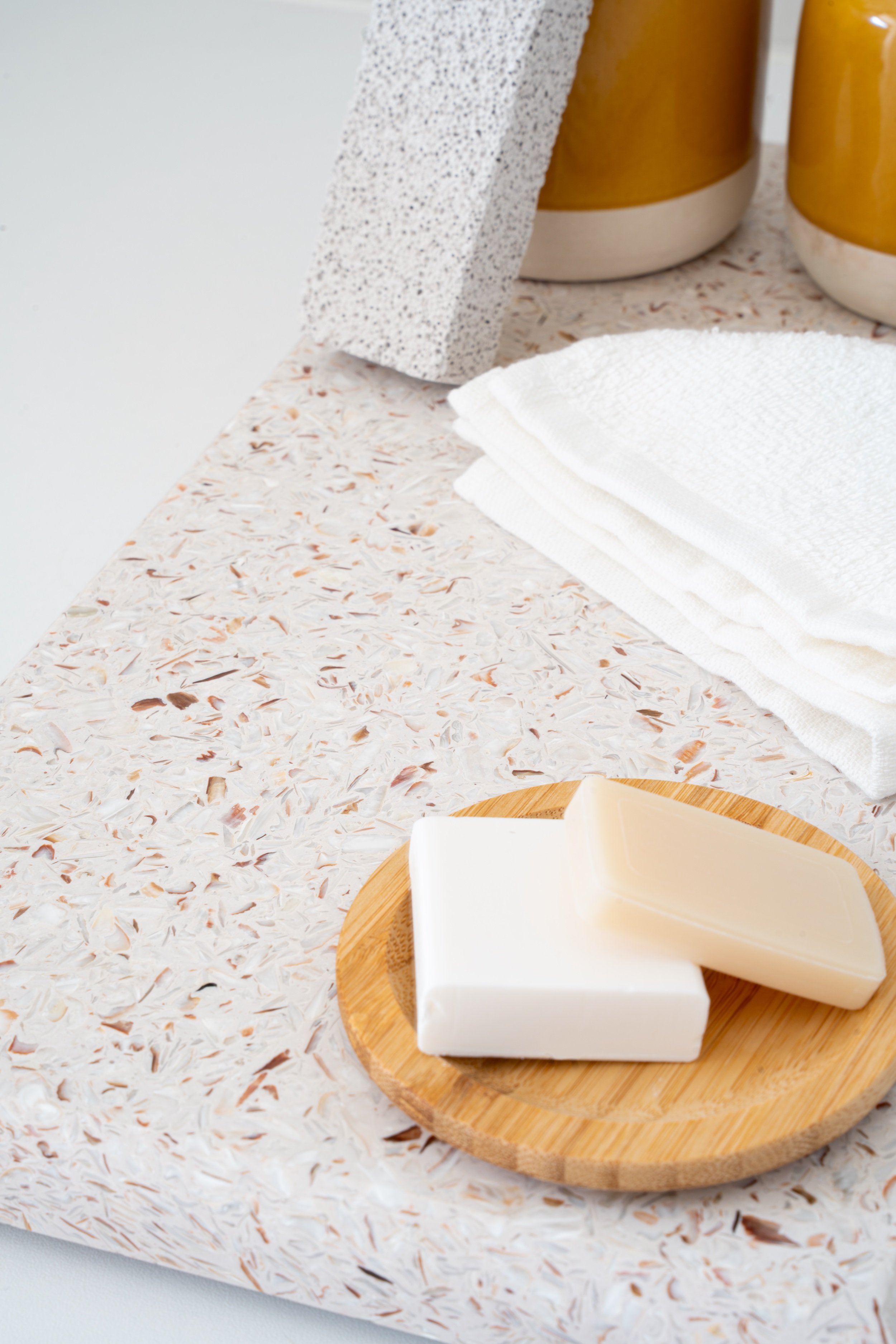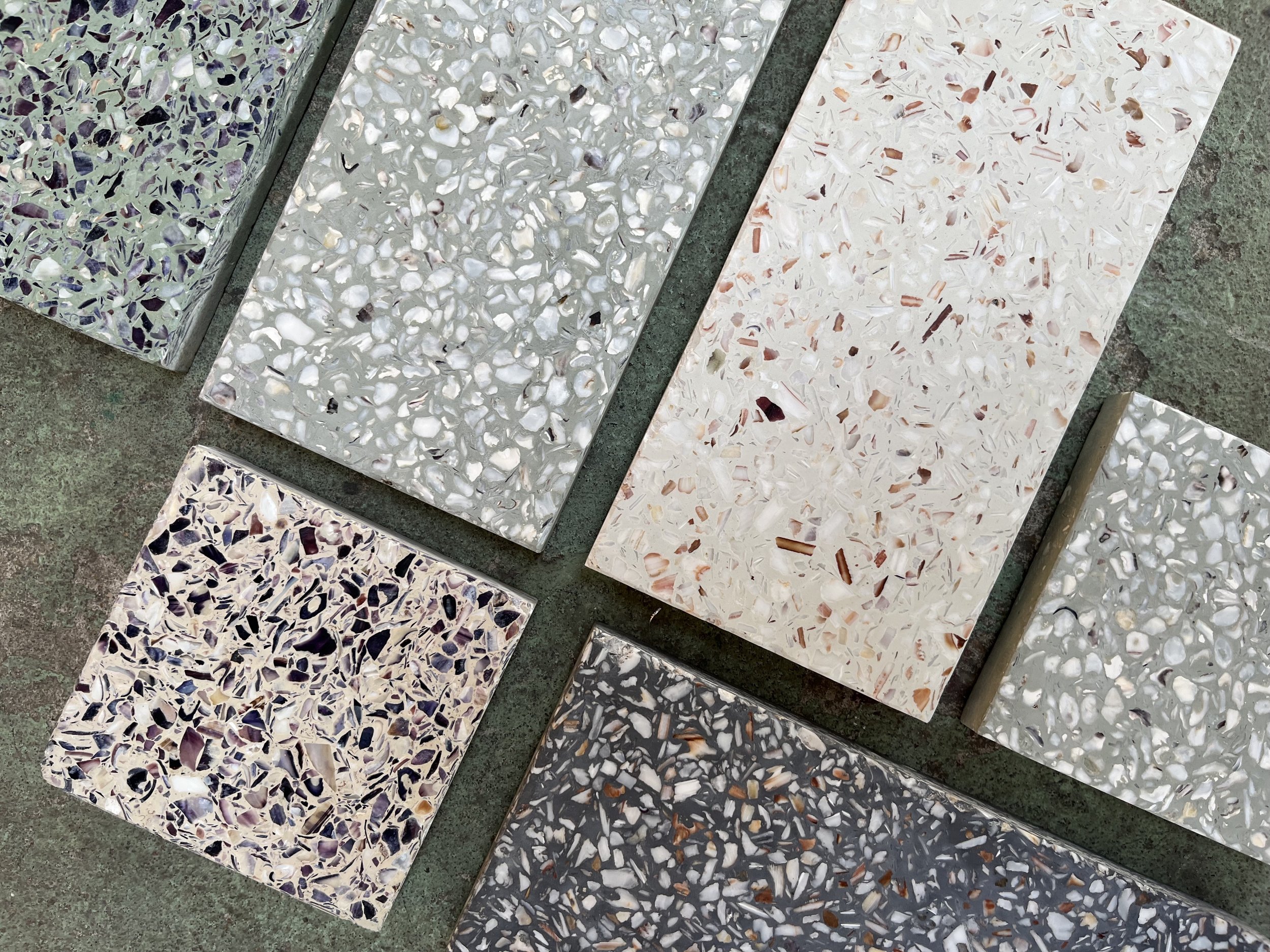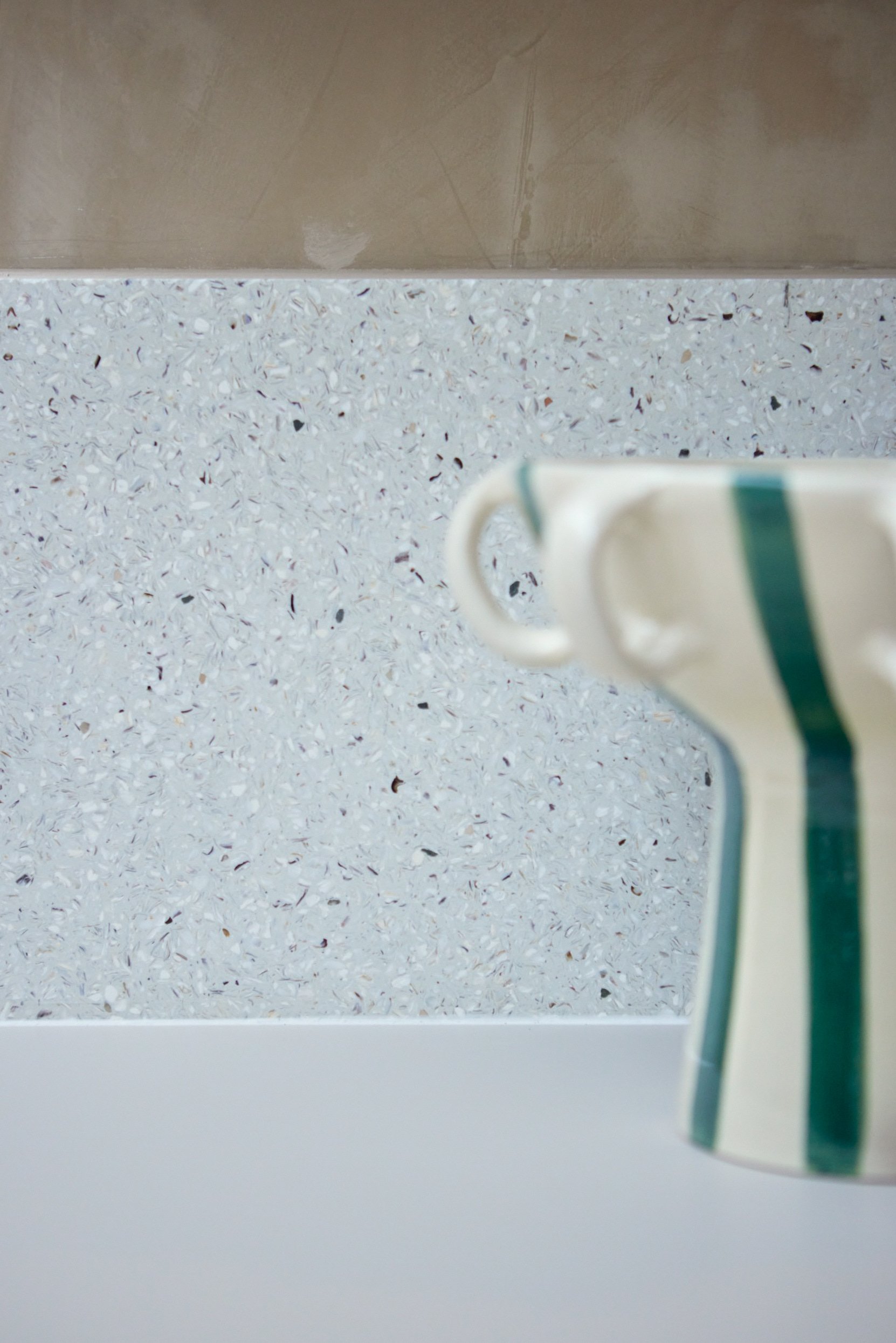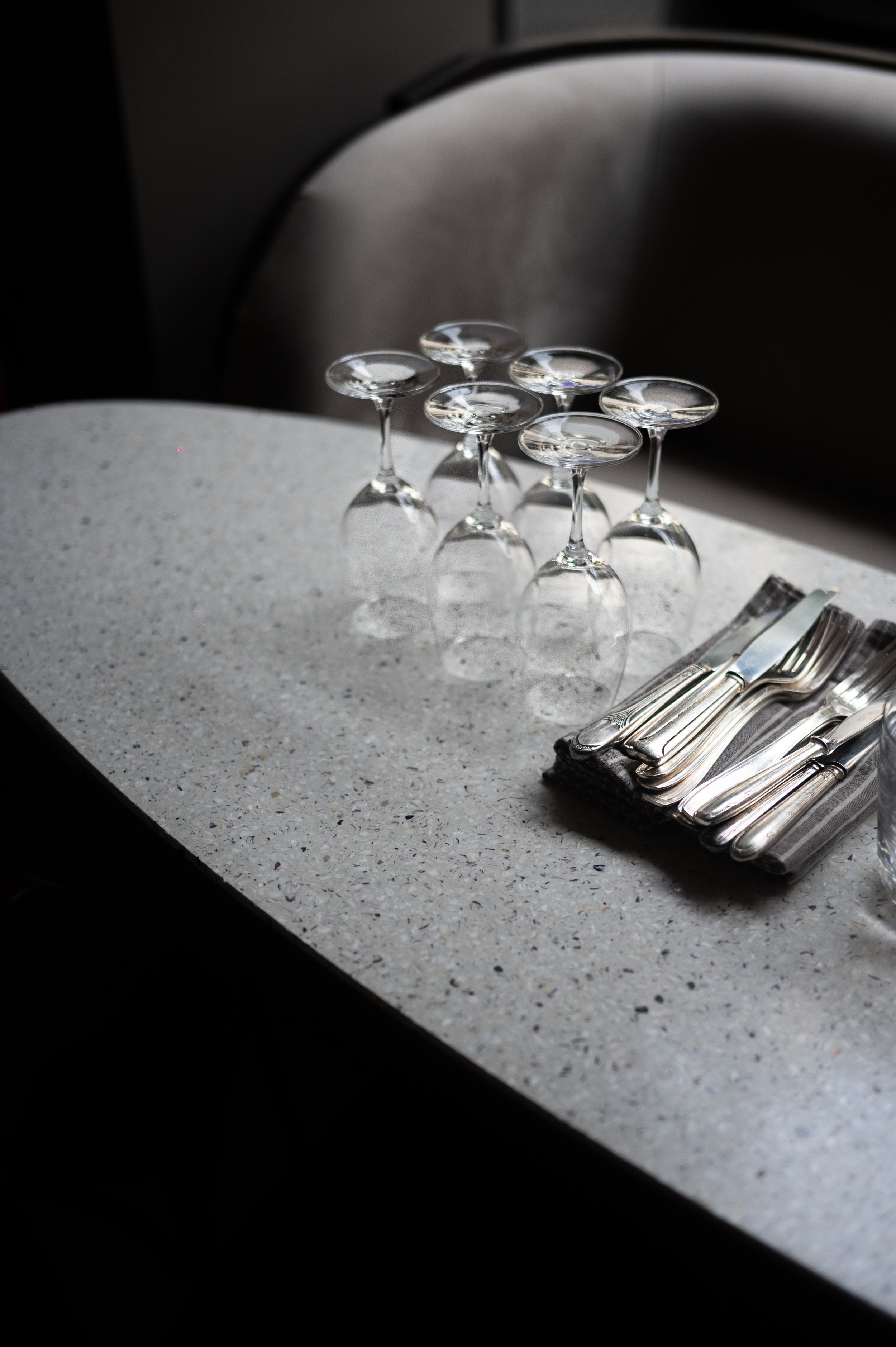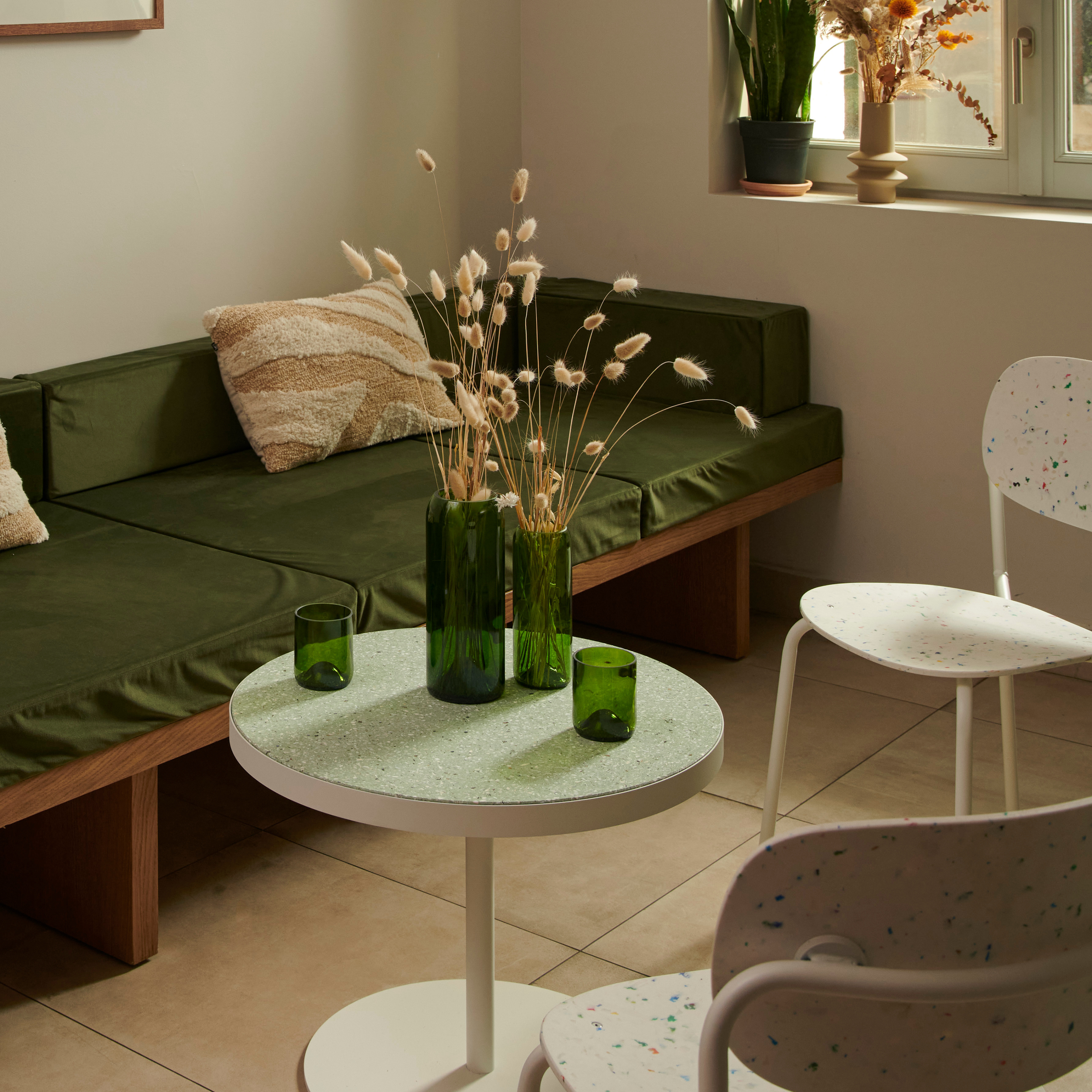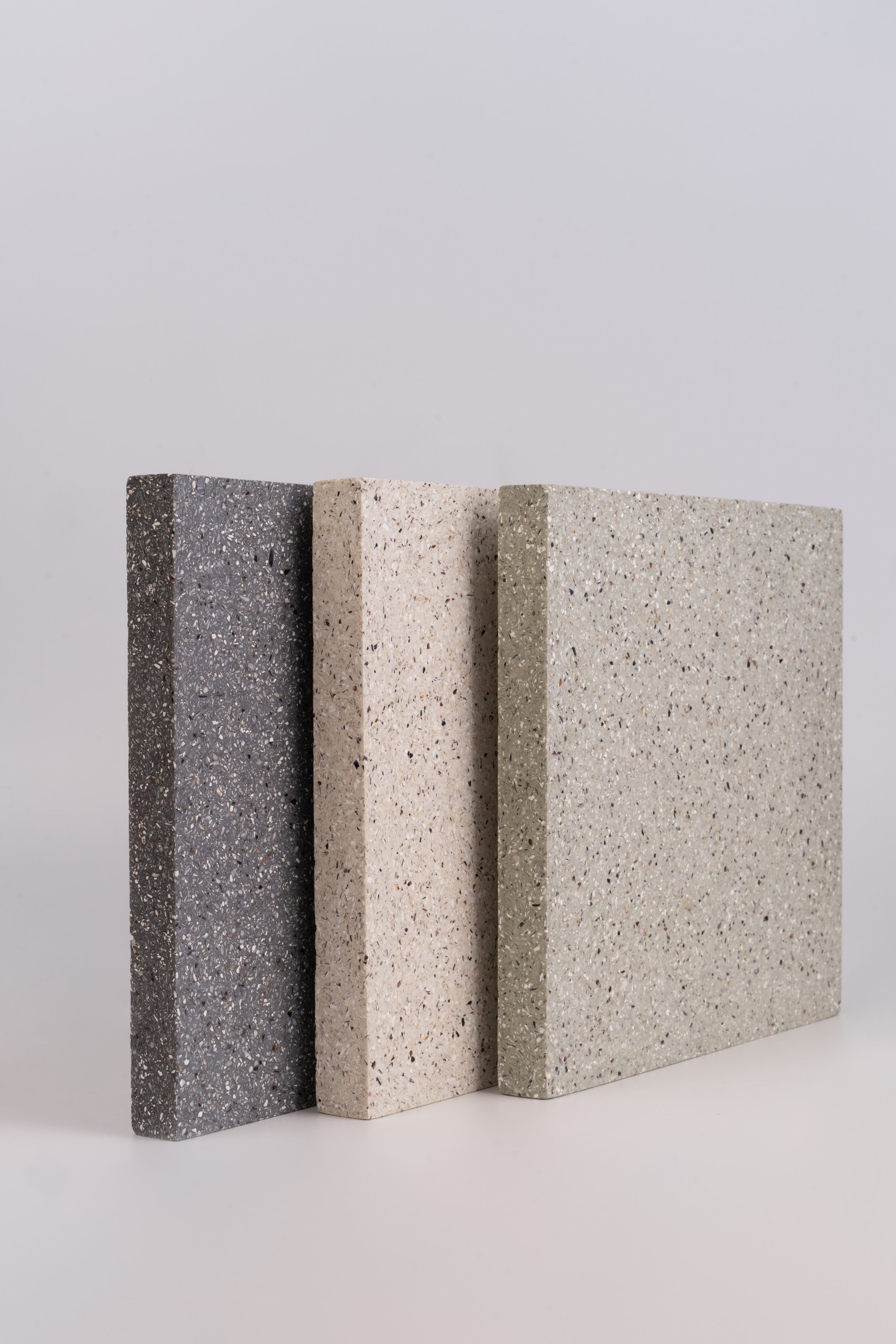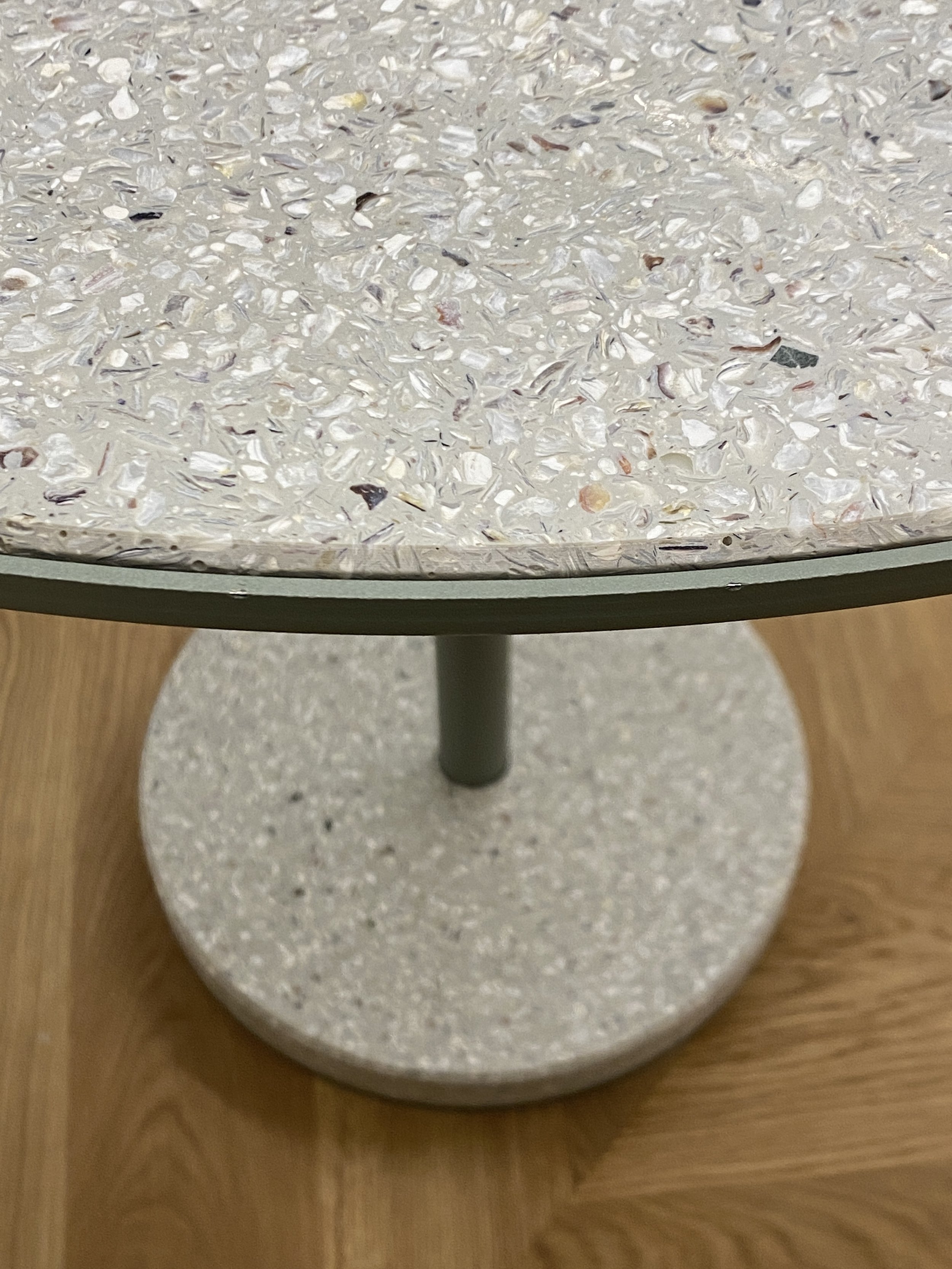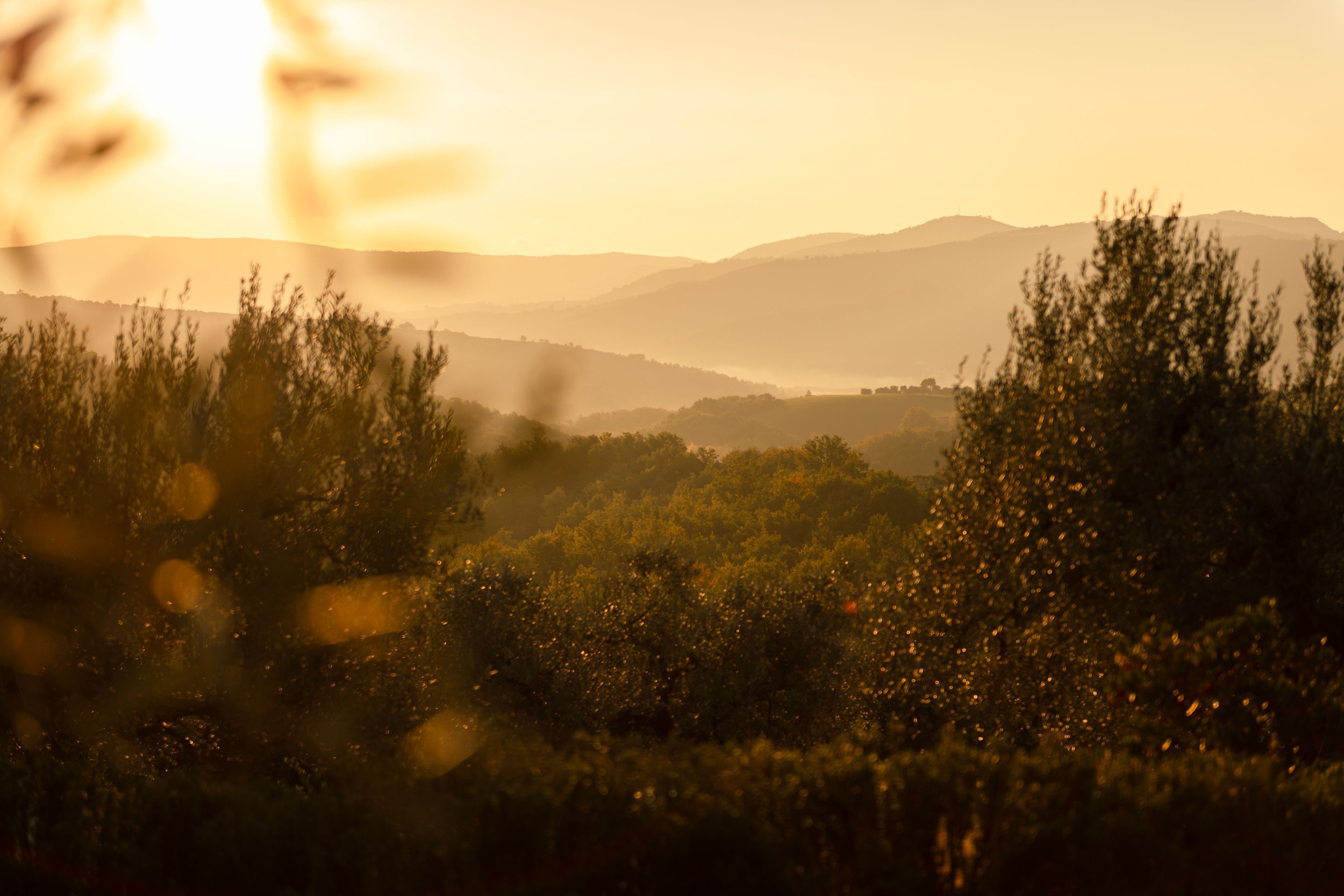Creating a New Marine Material
Ostrea transforms oyster shells for ecological & economic impact
Words by Clara Le Fort . Images by Ostrea
“I felt an urge to create a project with a positive social or environmental impact. When faced with the amount of oyster shells available, my first thoughts were never about how much money could be made, but how many tonnes of shells could be salvaged and turned into a low-carbon asset,” says Maxime Roux, co-founder of Ostrea
These are exciting times for product design, as innovative materials are leading the charge to fight climate change. Think biodegradable packaging made from algae (Notpla) or artichoke waste (Packioli), and organically grown building materials (Material Cultures) — the everyday solutions inspired by and derived from nature that remind us of the endless possibilities to create without harming the environment.
From the shores of Brittany, Ostrea emerges as another compelling example and a timely innovation in transforming an abundant natural resource — marine waste.
Turning the tide on shell waste
During the pandemic, four school friends raised in Brittany near Riec-sur-Bélon discovered the huge amount of oyster-shell waste that goes straight to landfill in France: 250,000 tonnes a year; almost 50% of which is composed of shells that are not deemed the ‘right size’ or broken before they reach restaurant tables; and costing the oyster producer 90 euros per tonne to dispose of. The friends were shocked, and quickly set about finding a long-term solution. Together, Maxime Roux, Tanguy Blévin, Théo Joy and Camille Callennec launched Ostrea, with the aim to transform a pile of marine waste into a useful resource and viable material.
Finding the right process
It was Blévin who kick-started the project, as his brother worked for the renowned seafood-merchant and oyster aquaculturist Maison Thaëron, which has been in business since 1879. Having secured access to a plethora of oyster farms and shells, Blévin then turned to Joy, an artist and expert in materials, who he persuaded to join the mission as a creative engineer. Roux and Callennec, who specialise in business strategy and sales (both had previously worked for Google), then came in to structure the project.
Yet, none of them quite realised the extent of what they would achieve. First, they interrogated the shell business, looking for more profitable opportunities to reuse the shells. Shell waste was already being repurposed in the cosmetics and agriculture industries — for example, as chicken feed, or to bring oligo-elements to the soil — but the commercial turnover was small, with only 5 to 10% of the available stocks being used. So, the team decided to create a recycled and low-carbon material that would proudly qualify as ‘Made in France’. “The idea of creating a new material that could easily be adapted to all shell types brought with it the sheer notion of volume! Our first prototypes were composed of 65% shell; and by using three different flake sizes we could imagine a whole range of nuances and materials out of discarded oyster shells, but also scallops and mussels,” Roux tells Looms.
“Our first prototypes were composed of 65% shell; and by using three different flake sizes we could imagine a whole range of nuances and materials out of discarded oyster shells, but also scallops and mussels”
Inventing a new sector
While developing prototypes, the team soon realised how difficult it was to find a plastic-free binding agent. They entered and won a prize for innovation, supported by Bretagne Energies, receiving a substantial amount of money to invest in R&D. “We started looking at bio-based green resins that are, in theory, 100% recyclable, but we quickly realised it was too costly and energy-intensive to make them work.Our aim then became to invent a new industrial sector,” Roux remembers. “We worked towards a clay-based binding agent to which we could add biominerals and vegetable additives. We are currently patenting the mix. Once on the market, Ostrea will be available as a new material composed mostly of shell flakes (65%), bound with a bio-based mineral cement, without any petrochemical additives,” Roux explains. The next task also presented a significant challenge: to invent a hygiene protocol that complies with EU regulations and set up a chain that enables the cleaning and pounding of shells in a homogeneous manner (all shells require different cleaning techniques), and without health risks. Reader, they succeeded.
A super low carbon solution
Today Ostrea materials are durable, heat-, UV- and abrasion-resistant, stainless and 100% recyclable. Moreover, the new material is a clear answer to the decarbonisation of the building industry: a square metre of Ostrea material emits 3kg of CO2, compared to the equivalent surface in ceramic or PVC, which emit 48kg and 97kg respectively. In less than a year, Ostrea has worked with construction company Vinci to develop their wall and surface coverings, and with Brittany’s largest marble company to distribute Ostrea panels across their kitchen retailers. To date, more than 200 architects have referenced Ostrea, and their projects have flourished, from produce-driven Parisian restaurant Pristine to co-working space Morning at Pont de Neuilly.
In September 2022, Ostrea officially launched during Paris Design Week. Six months later, the Brittany boys raised €1,6m in pre-seed funding to finance an accelerated growth. The Ostrea material was also selected by the Maison&Objet Paris exhibition in September 2023 to spotlight at Future On Stage. “To be honest, we are held back today by our capacity of production, which is about 8m2 per day. We need to start thinking bigger, on a larger scale, to build a new marine-shell upcycling sector not only in Brittany, but across France,” Roux concludes.
“We need to start thinking bigger, on a larger scale, to build a new marine-shell upcycling sector not only in Brittany, but across France”
Follow @ostreadesign to stay up to date with their latest innovations.




